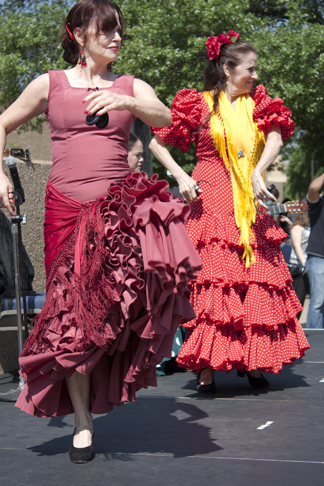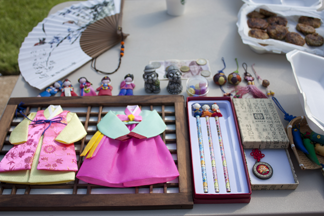
By Justin Gladney/reporter
Henna, a multi-use Middle Eastern plant that has generated its own art form, was the subject of a NE Campus lecture April 10.
“What’s really cool about learning art forms from other cultures is that it really does bridge a gap, and it opens an avenue to new cultures,” said Emily DeVoss, who presented Henna — The Enchanting Art Form during the NE Campus International Festival.
DeVoss told the audience how henna is made as well as its origins, its use, its importance to cultures and her background of learning henna.

The art form originates from India, North and East Africa and the Middle East, which is where the plant Lawsonia inermis, or henna, grows, she said.
Henna is used as a dye for clothing and body painting, as an herbal remedy that can fight colds and infection, as an anti-fungal protection for feet and as a natural cooling remedy used on babies’ or small children’s feet to reduce body temperature during fevers, DeVoss said.
Henna in Islamic cultures is used mostly during weddings with the bride covered from hand to elbow or forearm and from toes to knees in intricate and artistic designs to display femininity, a process usually taking at least four hours, she said.
Henna is also common during Islamic fertility festivals, usually called baby showers in America, to express celebration and the maturing of a girl into a woman, DeVoss said.
Henna is an important aspect in Islamic cultures, she said, because women in those societies often customarily completely cover their bodies except for the hands and feet. With henna, she said, women can express their feminine beauty without violating that custom.
Because of its celebratory nature, henna is usually not acceptable during periods of mourning and the Islamic monthlong celebration Ramadan, DeVoss said.
To make henna, she said, one first dries and crushes leaves of the plant, then combines the crushed henna with oils and tea to break down the plant’s structure. This paste is then placed in a cone similar to those used by bakers and is then placed on the skin in the desired design.
After henna is placed on the skin, the person must stay still until the paste flakes off. The dark color takes about three to four days to fully show on the skin, DeVoss said.
“It’s not permanent like a tattoo, which makes it fun because you can put a new design on each month,” DeVoss said. Henna can stay on the skin from two to six weeks, depending on how often the individual washes the painted area, she said
Henna is different in different cultures, DeVoss said.
“The Indian design is very heavy and intricate. You can see a lot of geometric designs, straight lines and patterns,” she said. “Then you have Arab designs, which are more floral and large and curvy.”
DeVoss has taken the teachings of henna, which she learned during two years studying in the East African nation of Tanzania, and created her own artwork displaying Christian scripture. She also does designs for clients at her home.



























